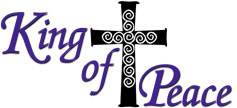
The
theology of the hammer Tell me what you believe and you may or may not convince me to share your beliefs. Show me what you believe, then I will see and experience your beliefs for myself. You might still leave me unconvinced, but I will be far more persuaded by your actions than your words. The heart of both the Jewish and Christian faiths is this: Love God, Love your neighbor as yourself. Everything else in all of scripture is a commentary on living out these dual commands to love. Jesus said that love is the mark of being his disciple. Yet, merely telling someone that you love him or her is meaningless unless you also show that love. The New Testament Book of James puts it this way, “Suppose a brother or sister is without clothes and daily food. If one of you says to him, ‘Go I wish you well; keep warm and well fed,’ but does nothing about his physical needs, what good is this?” (James 2:15-16) Telling someone about God’s love without backing up those words with action is a waste of breath. This is why James went on to write, “I will show you my faith by what I do.” Putting faith into action is the idea behind what Habitat for Humanity Founder Millard Fuller calls “The theology of the hammer.” Fuller uses the hammer as a metaphor for how we can show our beliefs about God through action. While the hammer is a convenient symbol for the work Habitat for Humanity does in providing simple, decent, affordable homes to needy families, there is more to the theology of the hammer than that. Fuller points out that the hammer is a good symbol for Jesus who worked as a carpenter and showed his love for us most clearly as he was nailed to a Roman cross. The hammer is a powerful symbol of putting love of God and neighbor into action. Incarnation is the theological word for God becoming man in the person of Jesus. Incarnation means, “to be made flesh.” God was made flesh, or human, in Jesus, but the process of incarnation does not stop there. We can also incarnate the love of God for others. In our own imperfect ways, we can show God’s love in our actions. We become God’s eyes to see the problems and God’s hands to work alongside others on the solution. Habitat for Humanity is the prime example of “the theology of the hammer.” The problem of poverty housing around the world is so great it would seem there is nothing any of us could do to help. And yet, Habitat has been successful at tackling the problem one family at a time. Rather than concentrating on the immensity of the problem, Habitat concentrates on doing what little it can to begin to alleviate the problem. The results have been astounding. Habitat all began when Millard Fuller and his wife helped build a family a home at Koinonia Farm in 1969. By 1973, that experience led Millard and Linda Fuller to move with their kids to Zaire, Africa to build houses for the needy. The Fullers returned from Africa three years later with a zeal for solving the problems of housing. They founded Habitat for Humanity in 1976. The following year, they built the first Habitat house one block south of the group’s headquarters in Americus, Georgia. From that humble beginning, the idea of Habitat for Humanity has spread worldwide. The Habitat website offers the latest statistics: Habitat has built more than 125,000 homes for 625,000 people in 3,000 communities worldwide. In doing so, Habitat has placed the issues of housing before millions while giving tens of thousands of volunteers something constructive to do about the problem. Habitat does not give houses away. Families partner with Habitat, working alongside volunteers to build their own house. Those who are not physically able to work on the house can volunteer in other ways. Once the house is completed, the Habitat family buys the house through a low cost, no interest loan. The payments fund future Habitat houses. Rather than giving a hand out, Habitat offers needy families a helping hand. All that Habitat does has grown out of a desire to show love of God and love of neighbor through concrete action. This is the theology of the hammer. Habitat for Humanity is, of course, not the only way you can show God’s love to others. Every time you translate your beliefs into action, you make the Gospel relevant to the people around you. Habitat Founder Millard Fuller was greatly influenced himself by farmer-theologian Clarence Jordan. Fuller likes to quote the often quite blunt Jordan as saying some people would “worship the hind legs off Jesus but they wouldn’t obey him.” In following Jesus’ example in putting faith into action, work becomes a form of worship. The theology of the hammer is not meant to replace other forms of worship, but to add to them. While you can and should worship God with prayer, song, and praise, you can also worship God in action, making God’s love real in our own community. Today and tomorrow, volunteers will be in Woodbine putting their love of God into action through building two Habitat houses. If you want to join in incarnating God’s love in Camden County, call the Habitat office 673-1266 for more information, or drive north through Woodbine on US 17 and follow the signs to the worksite. There you will find a form of worship that may give you blisters, but it will also leave you with a deep feeling of satisfaction. (The Rev. Frank Logue is pastor of King of Peace Episcopal Church in Kingsland.) |
King of Peace Episcopal Church + P.O. Box 2526 + Kingsland, Georgia 31548-2526